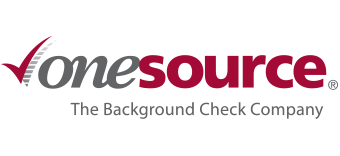Identifying & Reducing Employee Online Misconduct
Previously, we’ve touched on why employers utilize social media screening. To summarize, two businesses found out the hard way that problematic team members can draw negative attention to their employer and waste a lot of time, money, and resources along the way. Of course, those wasted efforts could have been avoided had they thoroughly vetted the online behavior of those in question.
When properly administered, this type of check contributes to lower staff misconduct, higher productivity, and a larger talent pool thanks to a positive perception of employer brand. Now, we’ll explore the most common types of misconduct found while reporting before learning how to mitigate it.
Common Offenses
With a litany of online activity resulting in red flags, it helps to categorize them for reports. Eight of the most common labels applied are Criminal Offenses, Violence, Drugs, Intolerance, Hate Speech, Harassment, Sex, and Threats.
- Violent and Threatening content often include mentions of physical aggression or express an intent to cause harm.
- Content labeled for Drugs could relate to the use, distribution, or advocacy of any variety of mind- or body-altering substance, regulated or otherwise.
- Flags of Intolerance or Hate Speech often show intolerance of or a bias towards specific demographics.
- Material can be flagged as Harassment if the individual has kept up persistent, unwelcome communication with specific users or groups.
- Sexually explicit material or discussions of a sexual nature result in the Sex label.
- The Criminal Offenses label can be broadly applied to any indication of illegal activities or involvement in criminal behavior.
Once you know what kind of behavior to keep a lookout for, it’s important to prepare a plan to minimize their effects on your organization.
Moderating Misbehavior
The first step is to ensure you’re equipped to handle potential issues that arise. One way HR teams can do so is by including a social media policy in the organization’s employee handbook. Make sure it details what’s acceptable, what isn’t, and the consequences of non-compliance.
Second, work with IT support to implement monitoring systems and software tools that track online activities within the organization’s network and detect potential misconduct. This could include content filtering and firewall technology to reduce access to certain websites or platforms. Periodically providing regular training on responsible internet usage and the organization’s policies regarding online conduct can also further reinforce a culture of accountability and professionalism among employees.
Third, consider encouraging your personnel to use their paid time off. Why? According to a study conducted by Hiscox, an insurance provider, it’s not only one of the easiest ways to identify potential cases of fraud, but it also gives team members additional time to relax, reducing the likelihood that they act out.
Last, it’s necessary to have an effective HR tech stack. Tools like anonymous whistleblower forms or hotlines, workplace communication monitoring, and necessary background and reference checks make identification and prevention easier to handle.
At the end of the day, it doesn’t matter if your team is big or small; misconduct in any form is a threat to business. Facing it may sound daunting, but One Source can help. Reach out to learn how to best integrate social media screening into your policies for a successful staff.











